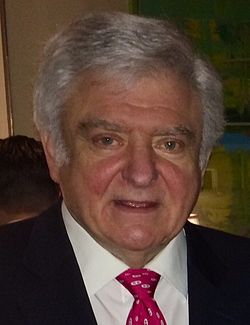
en.Wikipedia
I’ve sometimes wondered if exceptionally successful individuals like Jimmy Pattison use their brains differently than the rest of us mere mortals. Books like “The Success Principles” by Jack Canfield suggest they do. In “The Case for the Defence” legendary attorney Edward (Eddy) Greenspan (1944 -2014) provides some helpful insights.
One case he cites involved Anthony, an Italian shopkeeper who had confessed to the shooting of 2 youths, both age 17. When the police arrived at his shop they saw the boys lying side by side on the floor, a total of 8 bullets in their bodies. In answer to their questions, Anthony was reported to have said, “they come in my shop. I shoot them.” Considering it an “open and shut” case, they charged him with first degree murder. The Crown Prosecutor agreed and opposed bail.
Retained to represent Anthony in court, Greenspan realized it would be extremely difficult to convince a jury to acquit a man who has shot 2 innocent youths from good families. He did not, however, assume it was hopeless and wondered if the police perception might be overly simplistic. It was his practise to question his own assumptions and those of others. He wasn’t a fan of easy explanations and applied a relentless work ethic to uncover the facts.
Having a curious mind, he felt somewhere in this tragic situation there might be information that would assist him in defending his client. Patiently questioning Anthony, he discovered the man had been born in Italy and because of his father’s ill health, had gone to work after grade 5. Upon emigrating to Canada he married a girl from his village in Italy and they had 2 children. To support his family, until the day of his arrest, he had worked 14 hours a day, 7 days a week. His English was rudimentary.
Greenspan felt he must gain an understanding of why a hard working man with a family might have shot 2 apparently harmless young men. Working tirelessly, as was his habit, he delved into every possible nook and cranny.
Examining police notes, Greenspan concluded his client had not understood their questions and they had not understood him accurately. They had written in the notes what they thought he had said.
What, he asked himself, would have led this seemingly harmless man to pull the automatic 32 calibre Beretta from a shelf behind the counter and shoot the boys? His questioning revealed that the 2 young men had entered Anthony’s shop on numerous occasions. Usually they harassed him with threats. One had stolen 5 gallons of gasoline. They had also thrown snowballs at his shop and broken a light bulb. They were big, strong boys and he was scarcely more than 5 feet in height. He admitted he had feared them.
Greenspan’s meticulous, unstinting research revealed that the youths had earlier threatened, bullied and physically attacked others. On the night of the shootings, they had entered Anthony’s shop just before his closing time of 10 pm. One took a swing at him, then reached for the cash register. When Anthony said, “I call police,” the youths said they would kill him before he could make the call.
Greenspan knew that in court, the Prosecutor, a skillful litigator, would almost certainly play hardball. Unlike Greenspan, he had accepted the police version of events. Greenspan understood fully the Prosecutor’s role and purpose was to tenaciously argue for a guilty verdict. He would not ferret out mitigating information. Believing Anthony deserved a harsh sentence, the Prosecutor would use every possible device to convince the jury he was of unsavory character.
In court, the Prosecutor argued that Anthony had shot the boys in revenge for the gasoline theft. However, Greenspan convinced the judge to allow him to present the bullying history of the 2 youths. He argued Anthony had become psychologically distraught by their threats. He had believed they intended to rob him and then kill him so he could not identify them later. Anthony testified “in all my life I have never been so afraid.” At the end of the trial, after 5 hours of deliberation, the jury found him “not guilty.”
Observing Edward Greenspan, Jimmy Pattison and others, I’ve concluded that along with their various skills and positive attributes, highly successful individuals possess a deep seated conviction that what others deem impossible might in fact be possible.

One thought on “Did Edward Greenspan Think Differently?”